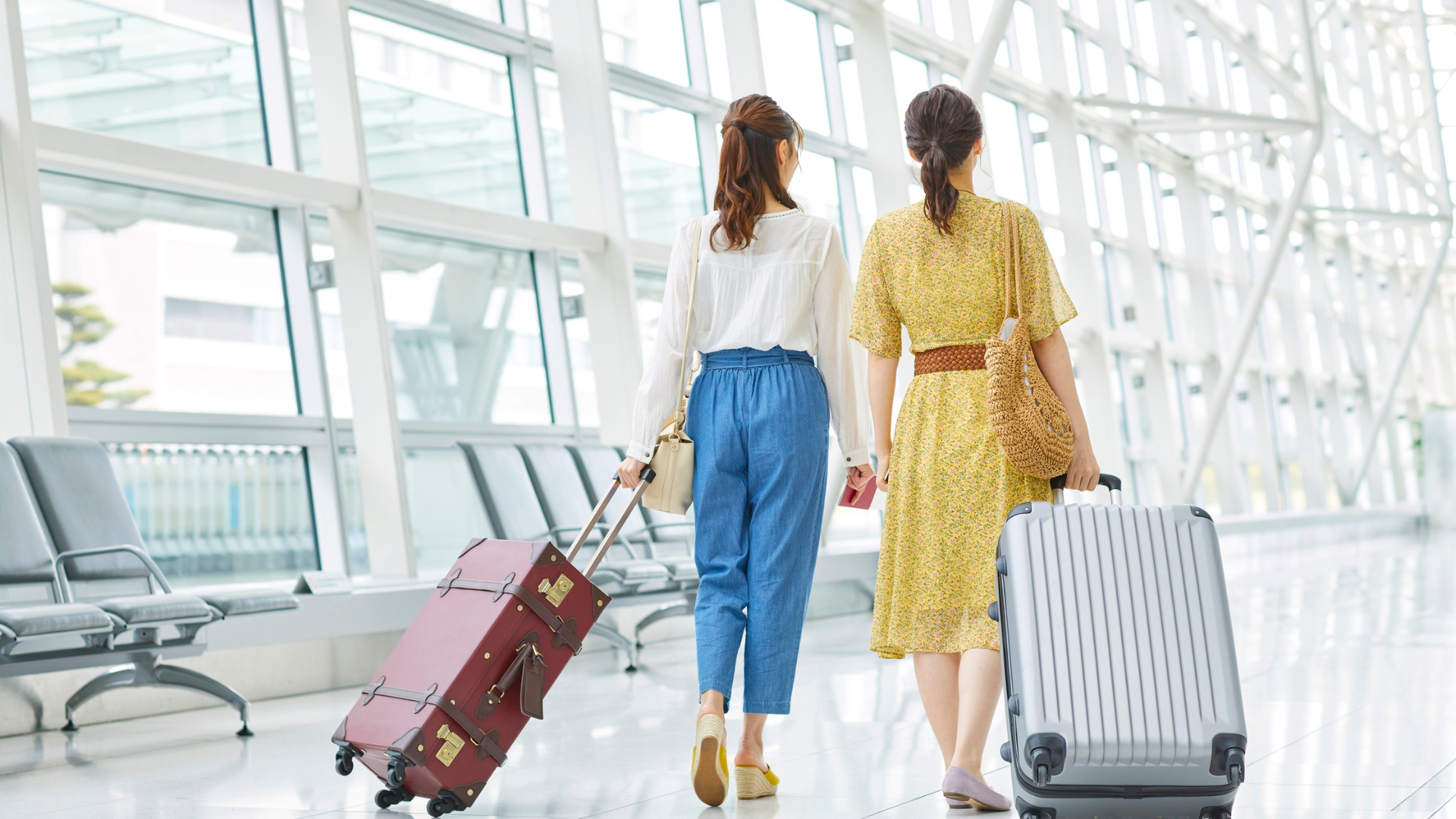Navigating airports can often feel overwhelming, especially for those unfamiliar with the process. Mastering the art of airport navigation enhances the travel experience and reduces stress significantly. From understanding security protocols to knowing the fastest routes between terminals, a few simple tips can make all the difference.
Travelers frequently encounter crowded terminals and lengthy lines, which can test their patience. Planning, such as arriving early and utilizing mobile apps for real-time updates, can streamline the airport experience. Engaging with airport amenities, like lounges or dining options, can also make waiting more enjoyable.
Being prepared is key to effective airport navigation. Familiarizing oneself with the layout of the airport and its services not only saves time but also ensures a smoother departure and arrival process. A little knowledge goes a long way in transforming any journey into a more pleasant adventure.
Preparing for a Seamless Airport Experience
A well-planned airport experience enhances travel efficiency. Key factors include gathering necessary travel documents, packing strategically, choosing the right luggage, and understanding airport regulations.
Essential Travel Documents and Requirements
Before heading to the airport, ensure that all necessary travel documents are prepared. This typically includes a valid passport, visa (if required), and boarding pass. It’s wise to check in online to save time and secure preferred seating.
Travelers should have a printed or digital copy of their itinerary, identification, and any required health documents. If traveling internationally, familiarize yourself with vaccination requirements or travel advisories for your destination. Global Entry can expedite processing for international travelers, minimizing wait times upon arrival.
Packing Smart and Efficiently
Efficient packing is crucial for a smooth airport experience. Begin by creating a packing list to avoid forgetting essentials. Use packing cubes to organize items effectively and maximize space.
Clothing should be rolled to save room and minimize wrinkles. Include a change of clothes in carry-on baggage in case of delays. Consider travel-sized toiletries that comply with the 3-1-1 rule: containers must be 3.4 ounces (100 milliliters) or less, all fitting within a single quart-sized clear bag. This preparation ensures easy access during security checks.
Choosing Between Carry-On and Hold Luggage
Determining whether to use carry-on or hold luggage depends on the length of the trip and personal preference. Carry-on bags offer convenience, allowing immediate access to belongings and avoiding baggage fees. For short trips, a well-packed carry-on may suffice.
However, for longer journeys or if traveling with bulky items, hold luggage may be necessary. If choosing to hold luggage, secure it with a luggage tag to prevent loss. Be mindful of airlines’ baggage policies to avoid unexpected charges.
Understanding TSA Regulations and Prohibited Items
Familiarizing oneself with TSA regulations is essential for a smooth security experience. This includes understanding what items are prohibited in carry-on luggage. Common restrictions include firearms, sharp objects, and liquids exceeding the 3-1-1 rule.
Before departure, travelers should check the TSA’s website for updated lists of restricted items. Knowing these rules can help avoid delays at security checkpoints. Additionally, enrolling in TSA PreCheck provides expedited screening, eliminating the need to remove shoes and belts, making the process faster.
Mastering Airport Navigation
Effective airport navigation involves strategic planning and utilizing available resources. From arriving at the airport to making the most of terminal amenities, understanding key aspects can enhance the travel experience.
Getting to the Airport and Parking Strategies
Arriving at the airport can set the tone for the journey ahead. It is important to factor in traffic conditions, especially during peak hours. Using a GPS app or checking real-time traffic updates can assist in avoiding delays.
When it comes to parking, travelers often have multiple options. On-site parking tends to be convenient but may be more expensive. Off-site parking can offer savings, usually with shuttle services to the terminal. Booking a spot in advance via an app can secure a space and provide peace of mind.
Navigating Terminals Using Maps and Apps
Modern airports often provide terminal maps, which are crucial for effective navigation. Travelers should familiarize themselves with the layout, which typically indicates security checkpoints, gates, and amenities.
Many airports offer dedicated apps that feature interactive maps. These apps can also provide real-time updates on flight statuses and gate changes. Utilizing such applications simplifies the process of locating specific services, reducing potential stress.
Making the Most of Airport Amenities and Lounges
Airports increasingly focus on passenger comfort, offering a range of amenities. From dining options to shopping, knowing what is available can enhance the waiting experience. Travelers can look for dining highlights or duty-free shops in advance to save time.
Airport lounges provide a quieter atmosphere, often featuring complimentary snacks and Wi-Fi. Access to these lounges may require a membership or a specific ticket class. Travelers should check eligibility early to prioritize time spent in comfort rather than in crowded terminals.
Passing Through Airport Security Like a Pro
Navigating airport security can often be a stressful experience, but with the right strategies, it can be managed efficiently. Key steps include preparing for online check-in, understanding security procedures, and knowing the options available for expedited screening.
Online Check-In and Efficient Bag Drop
Utilizing online check-in is an essential first step. It allows travelers to secure their boarding passes before arriving at the airport. Most airlines enable this option 24 to 48 hours before departure.
Once at the airport, checking bags efficiently can save time. Look for dedicated bag drop counters or self-service kiosks. Some airlines offer mobile bag tags that can facilitate this process, ensuring you bypass long lines. Knowing the specific requirements for checked baggage, including weight limits and prohibited items, can further streamline your experience.
Navigating Security Lines and Expedited Options
At security, understanding the layout can help. Locate the nearest security checkpoint upon arrival. Many airports have signs indicating wait times for each line, enabling travelers to choose the best option.
For frequent flyers, enrolling in programs like TSA PreCheck, Global Entry, or Clear can expedite the process. These programs allow access to shorter lines and simpler screening procedures. TSA PreCheck offers benefits such as keeping shoes and belts on and not removing laptops from bags, while Clear uses biometric technology for quicker identity verification, speeding up the entire experience.
Smooth Security Screening Procedures
Preparing for security screening is crucial. Travelers should have their IDs and boarding passes readily available. Placing electronics and liquids in easily accessible spots helps prevent delays during the screening process.
Using bins effectively can also make a difference. Travelers should ensure that all items are placed in bins, with liquids and laptops on top for easy access. Familiarizing oneself with the TSA guidelines on what is permitted in carry-ons reduces the likelihood of issues at the checkpoint and keeps the line moving steadily.
Handling Special Situations at Security Checkpoints
There are occasions when travelers may face special situations, such as traveling with infants or individuals requiring assistance. Families should consider using designated family lanes, which are often less stressful. Pack baby essentials such as formula and diapers in a way that they are easily accessible.
For those with disabilities or medical needs, arriving early allows extra time for any necessary accommodations. It is advisable to inform security personnel about special requirements, which can facilitate a smoother experience. Understanding the procedure for carrying medical equipment, such as CPAP machines or medications, is essential for compliance and ease during the screening process.
Expert Strategies for Stress-Free Travel
Navigating an airport can be daunting, but with the right strategies, travelers can make the experience smoother. Focus on managing flight schedules, understanding the boarding process, and preparing for international travel.
Managing Gate Changes and Flight Delays
Gate changes and flight delays are common, so it’s essential to stay informed. Travelers should regularly check flight status on airport screens or through travel apps. Setting alerts on these apps helps keep you updated on any changes.
When a gate change occurs, calmly follow the signs or ask airport staff for assistance. They are well-equipped to provide accurate gate information. Remaining near the departure area can prevent last-minute scrambles. If delays arise, arm yourself with entertainment options, such as books or podcasts, to pass the time.
Boarding Process and Waiting at the Gate
Understanding the boarding process can significantly reduce stress. Most airlines board in groups based on ticket class or frequent flyer status. Travelers should familiarize themselves with the boarding order before reaching the gate.
While waiting, it’s advisable to confirm boarding times and gate number changes. Keep an eye on overhead announcements. Thoughtfully selecting a seat — a window seat, for instance — can enhance comfort during the wait. Additionally, being situationally aware allows for a smoother boarding experience when the time comes.
Tips for International Travel and Layovers
International travel often involves navigating customs and forms. Passengers should complete immigration forms ahead of time to save time. Having the necessary documentation readily accessible can expedite the process.
For layovers, knowing terminal maps can shorten travel time. Research the airport layout beforehand, especially if switching airlines. Utilize lounges for a brief respite, if available. They often offer comfortable seating and refreshments, ensuring a more pleasant waiting experience.
Staying Comfortable and Hydrated During Your Journey
Comfort during air travel is crucial, especially on long flights. Dress in layers to adapt to changing cabin temperatures. Bringing a neck pillow and a lightweight blanket can significantly enhance comfort.
Staying hydrated is vital in combating fatigue. Travelers should carry a refillable water bottle to maintain hydration levels. Many airports now provide easy access to water stations. Snacking on healthy options, like nuts and fruits, can help maintain energy during the flight.



